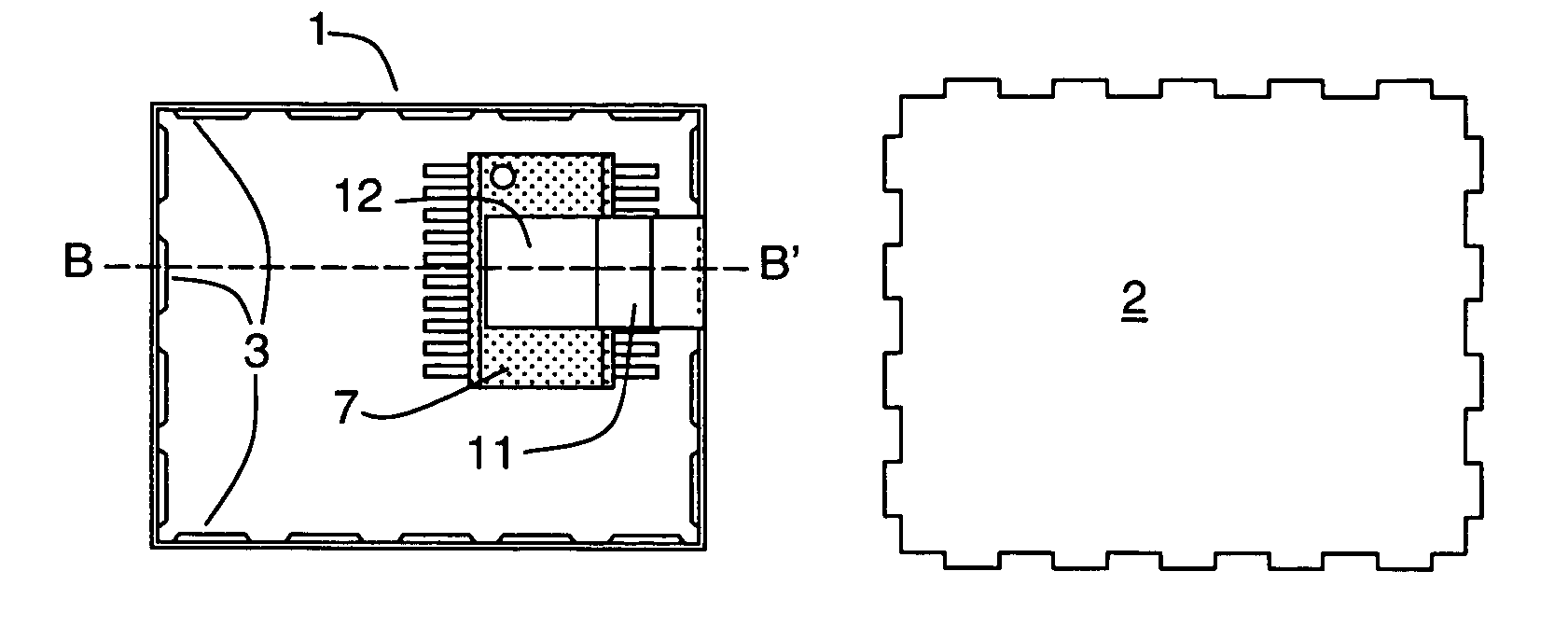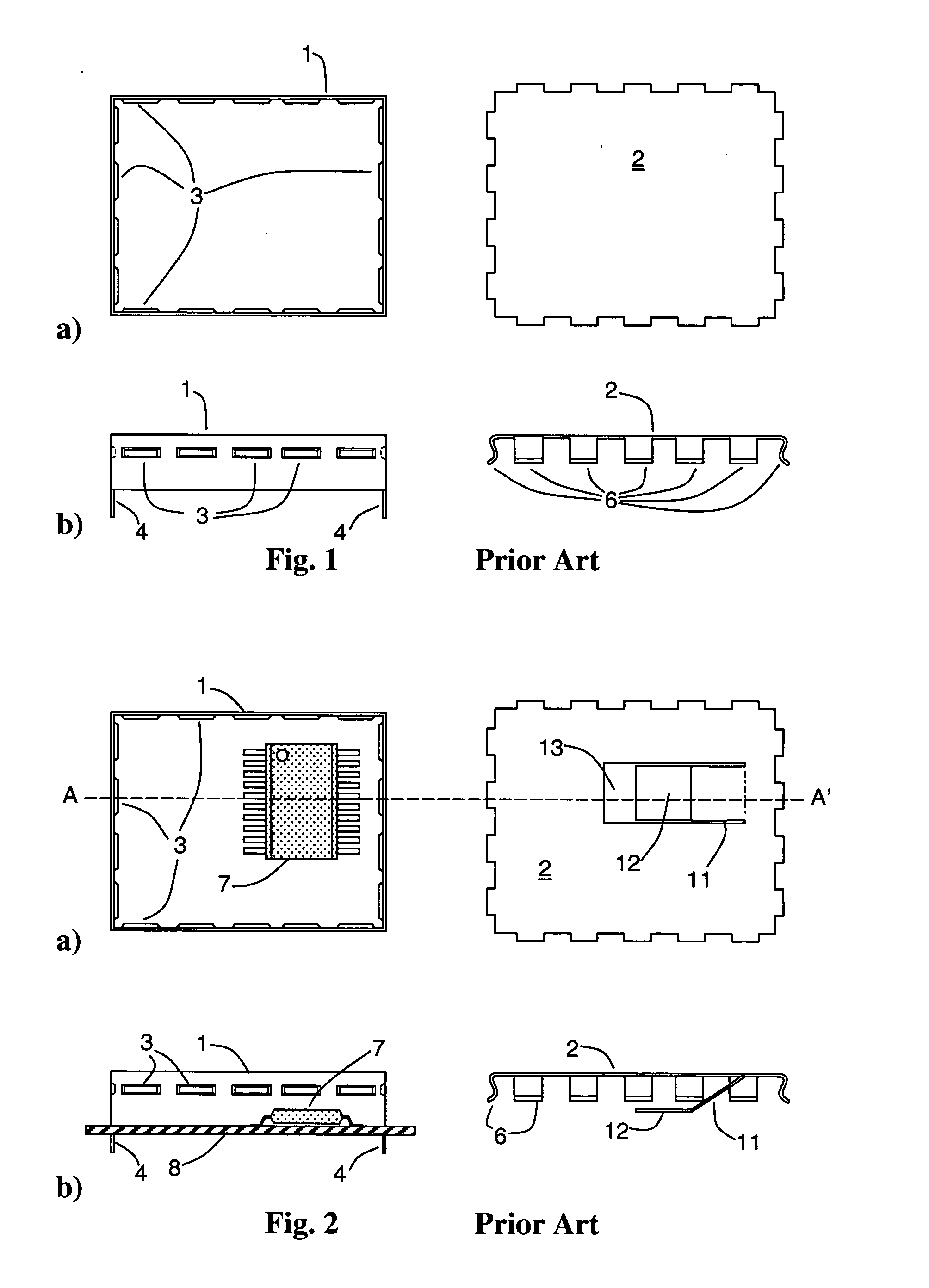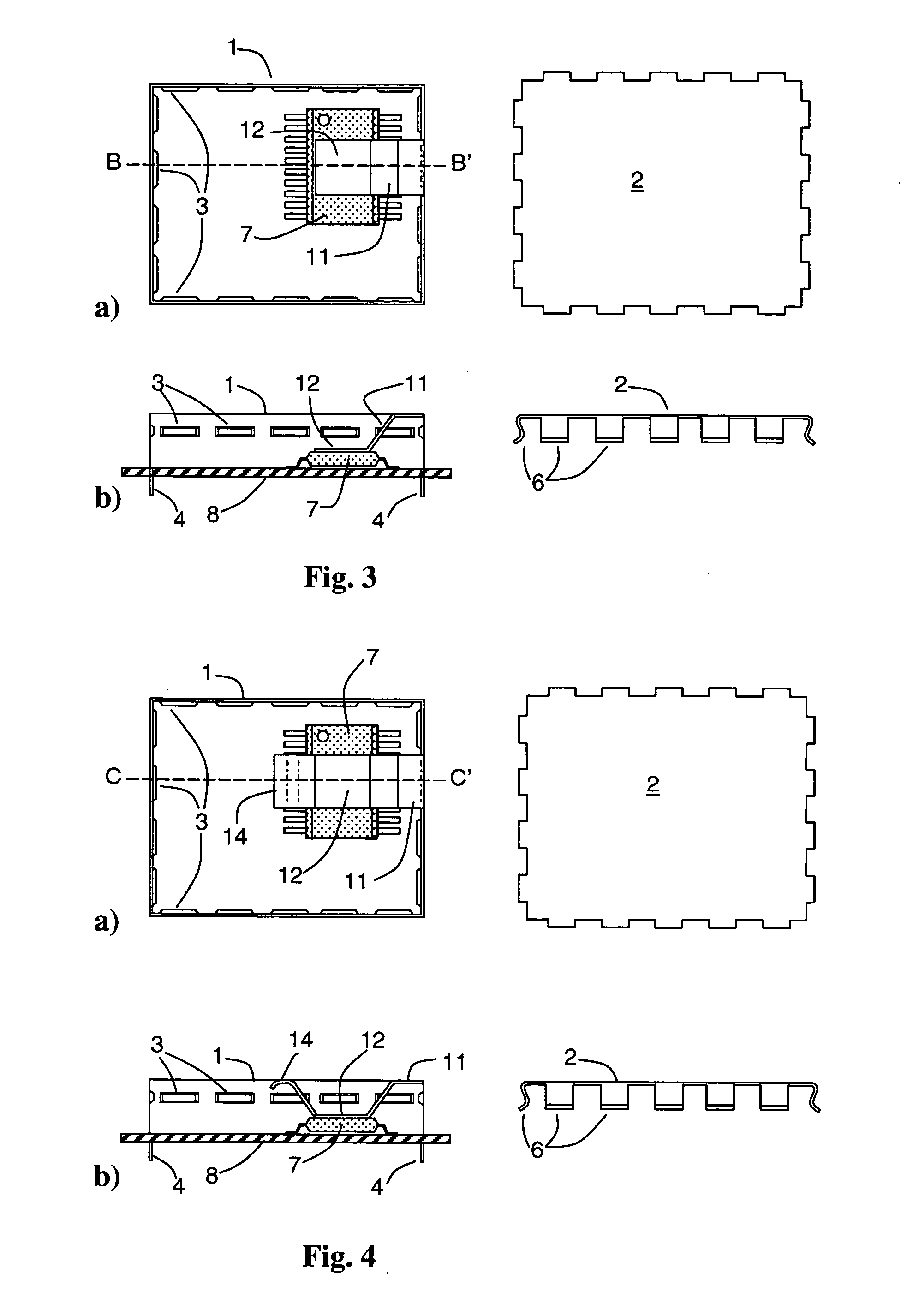Shield casing with heat sink for electric circuits
- Summary
- Abstract
- Description
- Claims
- Application Information
AI Technical Summary
Benefits of technology
Problems solved by technology
Method used
Image
Examples
first embodiment
[0018]FIG. 3 shows a shield casing according to the invention. The left side of FIG. 3a) shows a top view of a frame 1 with a thermal conductor 11. A heat source 7 is represented by a schematic view of an integrated circuit. An area of contact 12 of the thermal conductor 11 thermally contacts a corresponding surface of the heat source 7. Depressed parts 3 are arranged along the circumference of the frame, serving as engaging elements for corresponding parts of a lid. The right side of FIG. 3a) shows a top view of a lid 2, which obviously has no openings caused by a thermal conductor, thus ensuring proper shielding when mounted to the frame 1. FIG. 3b) shows in its left side a side view of the frame 1 cut along a section line B-B′ shown in FIG. 3a). The frame 1 is mounted to a circuit carrier 8, which carries the heat source 7, by means of projecting elements 4. The thermal conductor 11 is bent inwards from the top right rim of the frame 1. The thermal conductor 11 is bent in a way, ...
second embodiment
[0019]FIG. 4 shows a shield frame according to the invention. On the left side of FIG. 4a) a top view of a frame 1 is shown. As previously described in FIG. 3, the frame bears a thermal conductor 11, attached to the upper right rim of the frame 1. The thermal conductor 11 has an area of contact 12 for contacting a corresponding surface of a heat source 7. The heat source 7 is represented by a schematic view of an integrated circuit. The free end or support section 14 of the thermal conductor 11 is bent towards a lid 2, which is shown on the right side of FIG. 4a), and the correctly placed lid 2 applies a force on the support section 14, increasing the pressure between the area of contact 12 and the corresponding surface of the heat source 7. Like before, depressed parts 3 serve as an interlocking element for securing the lid 2. The lid 2 is essentially of the same kind as the one described in FIG. 3. The function of the support section 14 of thermal conductor 11 is easier understood...
third embodiment
[0020]FIG. 5 shows a shield casing according to the invention. FIG. 5a) shows on its left side a top view of a frame 1 with depressed parts 3 along its circumference. Like in the embodiments described before, the depressed parts 3 serve as interlocking elements for corresponding elements of a lid 2, which is shown on the right side of FIG. 5a). The lid 2 has a thermal conductor 11 attached to it on its right side. The thermal conductor 11 is bent downward underneath the lid 2 and has an area of contact 12 for contacting a corresponding surface of a heat sink. The thermal conductor further has a support section 14, which is bent upward against the lid 2 and applies an additional force on the area of contact. The function is easier to be understood taking a look at FIG. 5b). FIG. 5b) shows on its left side a side view of the frame 1 with depressed parts 3 for electrically and mechanically contacting the lid 2 and projecting elements 4 for mounting the frame to a circuit carrier 8. On ...
PUM
 Login to View More
Login to View More Abstract
Description
Claims
Application Information
 Login to View More
Login to View More - R&D
- Intellectual Property
- Life Sciences
- Materials
- Tech Scout
- Unparalleled Data Quality
- Higher Quality Content
- 60% Fewer Hallucinations
Browse by: Latest US Patents, China's latest patents, Technical Efficacy Thesaurus, Application Domain, Technology Topic, Popular Technical Reports.
© 2025 PatSnap. All rights reserved.Legal|Privacy policy|Modern Slavery Act Transparency Statement|Sitemap|About US| Contact US: help@patsnap.com



